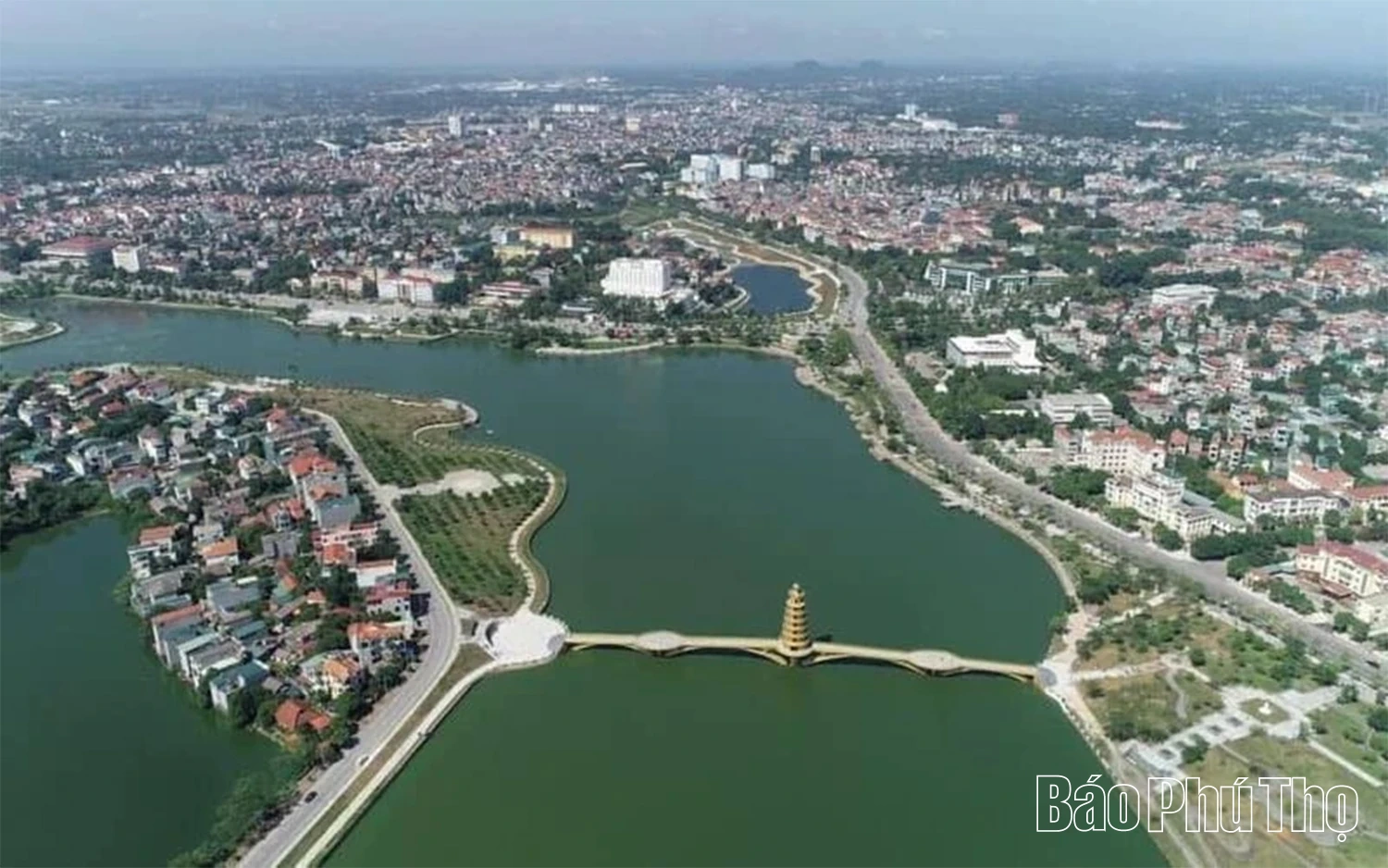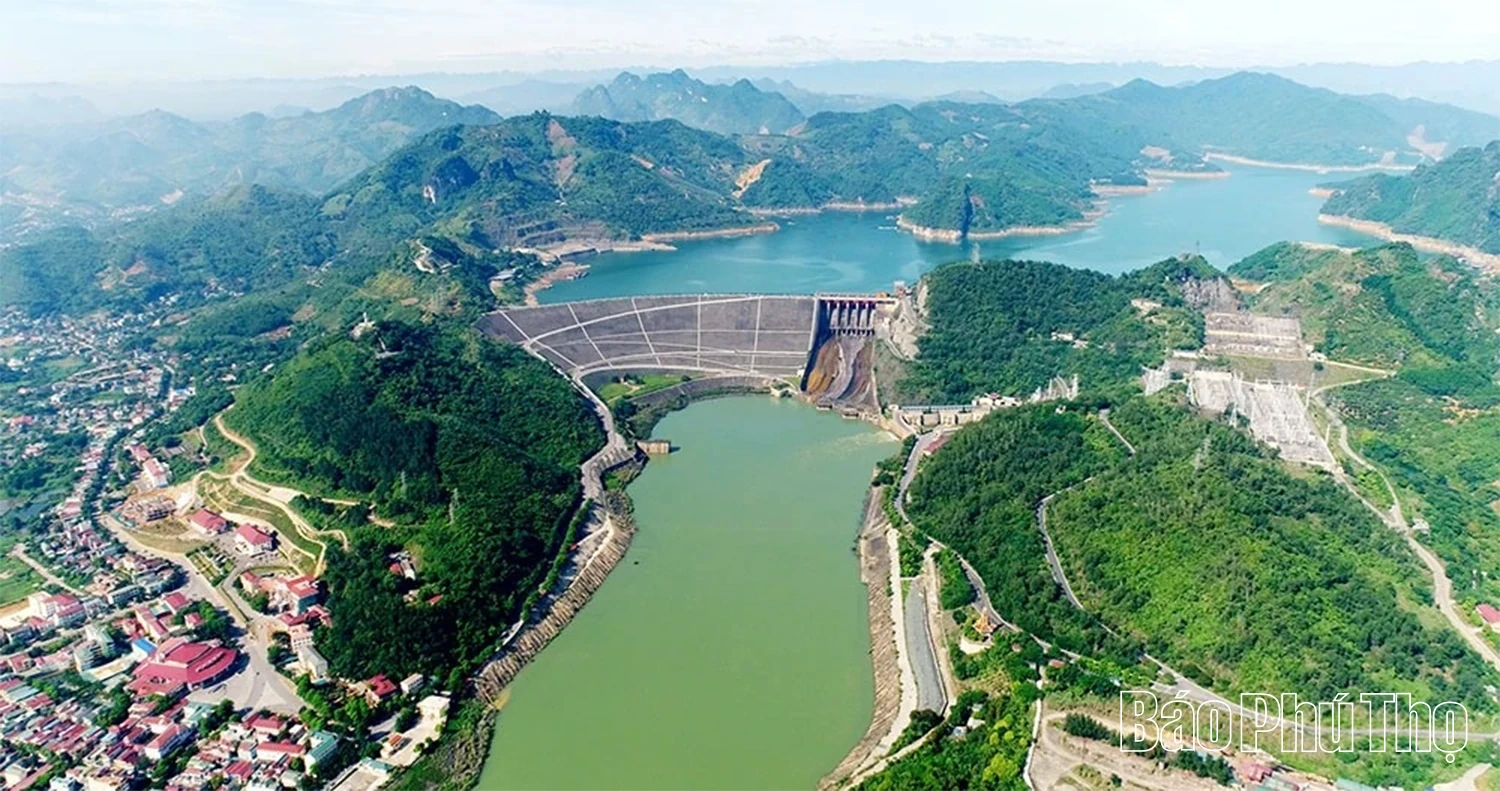{title}
{publish}
{head}
Following the recent merger, a new chapter has opened for Phu Tho province, not only in terms of its size or population, but more importantly, in its opportunity to reshape regional development thinking. At the heart of this transformation, planning plays a pivotal role.
The new Phu Tho is no longer just a geographic designation. It now bears a strategic responsibility on the development map of Vietnam’s northern midlands and mountainous areas. In this context, planning serves as a strategic compass—guiding the province in the right direction while ensuring no opportunity is missed.

The successful modernization of the former Vinh Phuc’s urban infrastructure stemmed from prioritizing planning from the outset.
Three regions - One opportunity
The streamlining of administrative structures is a breakthrough policy initiated by the Party and the State in the current period. Among these, the merger of Vinh Phuc, Phu Tho, and Hoa Binh into the new Phu Tho province marks a bold step forward in administrative reform, economic governance, and spatial organization. However, as many economic experts have noted, this boldness will only become a genuine turning point if planning is approached comprehensively, systematically, and with a long-term, innovative mindset.
Currently, Phu Tho is developing its provincial planning for the 2026–2035 period, with a vision to 2050. This is not a simple sum of three existing plans but rather a new planning symphony—crafted upon distinct foundations of geography, demographics, economic structures, and cultural identities.
Three initial regional development corridors are being proposed: the Eastern Economic Corridor (stretching from Vinh Yen through Viet Tri to the former Hoa Binh city), the Western Ecological–Cultural Region, and the Northern High-Tech Agroforestry Region. Each area, if its advantages are properly leveraged and linkages well-designed, will no longer remain a “sunken” zone overlooked by prior plans but will instead become a vital artery in a healthy, sustainably developing economic and administrative body.
The former Phu Tho could be seen as the “eldest sibling” of the three provinces—rich in cultural heritage, historical significance, and planning experience. With Viet Tri city as its core, the province has effectively developed a services–industry–tourism axis. However, investment gaps remain, particularly in areas yet to benefit from integrated planning or strong urban–rural–mountainous connectivity.

Quality planning in core subdivisions has shaped a spacious, modern appearance for urban areas in the former Phu Tho.
The former Vinh Phuc has long been praised as a model for successful industrialization planning. Its industrial parks—Khai Quang, Ba Thien, and Thang Long Vinh Phuc—have significantly contributed to regional GDP while positioning the province as a key player in the Northern region’s supporting industries. However, the pace of urban expansion has also brought challenges, such as the rise of unplanned urban zones, infrastructure overload, and increasing environmental pressures.
Meanwhile, the former Hoa Binh, blessed with natural landscapes and hydropower resources, has faced persistent planning obstacles. Not due to a lack of vision, but primarily because of limited resources and various objective constraints. Without flexible and inclusive planning, the remote areas of Hoa Binh risk being left behind in today’s fast-paced development cycle.
The right direction
The key to integrating these “three pieces” into a cohesive whole lies in a bold, creative, and forward-looking master plan. Planning must break away from fragmented thinking, embracing both horizontal integration (across sectors and industries) and vertical coherence (between administrative levels and over time).
The Eastern Economic Corridor—home to industry, services, innovation, and logistics—must serve as the development locomotive, not only driving growth but also distributing its benefits across the region. Surrounding satellite cities should be carefully planned to ease pressure on the urban core while balancing population and infrastructure demands.
The western and northern areas, with their forests, mountains, lakes, streams, and rich indigenous cultures, can serve as platforms for sustainable development—through ecotourism, organic farming, medicinal herb cultivation, and digital agriculture. But such potential must be unlocked through systematic planning to avoid the environmental degradation seen in poorly managed tourism projects elsewhere.
Infrastructure connectivity will be essential. Expressways, belt roads, inter-regional railways, and ICD dry ports—if planned as “development backbones”—can help the new Phu Tho not only grow internally but also establish smart, strategic linkages with the capital region, the Northwest, and even the coastal zones.

The overarching goal for 2030 is for the former Hoa Binh province to reach a relatively advanced development level, with per capita income among the highest in the northern midland and mountainous areas.
Experience shows that planning cannot succeed if confined to closed meeting rooms. It requires the voices of businesses, the feedback of local communities, the insights of experts, and the calculations of investors. Every planned region must be grounded in real-world conditions: land, people, customs, history, and development potential.
Planning must not fall into the trap of “concrete thinking”—that is, focusing solely on infrastructure—without putting people at the center. Effective planning must integrate living spaces, cultural life, employment opportunities, and social welfare in a balanced and adaptive way.
Above all, planning must be digitized, transparent, and continuously updated—ensuring that it keeps pace with technological advancements and global socio-economic shifts.
New thinking - New momentum
The new Phu Tho cannot move forward with the outdated thinking of the three former provinces. If planning continues to be treated as a mere administrative exercise, breakthroughs will be difficult to achieve. Only by viewing planning as the reorganization of living space and development through strategic thinking and regional linkage can Phu Tho become truly dynamic.
Not everything large is powerful. Not every tradition can be leveraged automatically. Not every good intention or idea will come true. Phu Tho can only achieve sustainable prosperity by fully harnessing the strengths of each region—by integrating space, culture, and people in a harmonious and innovative way.
With a standard-setting planning strategy, Phu Tho will not only be a new province in name or boundary but also a symbol of modern regional planning—where long-term vision, effective execution, and broad social consensus come together in the pursuit of sustainable development.
Quang Nam

baophutho.vn On the afternoon of December 1, Phu Tho Provincial General Hospital held a ceremony to receive 5 hemodialysis machines donated by Mr. Nguyen...

baophutho.vn On the morning of November 28, the Phu Tho Province Human Resources Workshop enters a New Era and the 2025 Job Fair took place at Hung Vuong...

baophutho.vn On the afternoon of November 27, Mr. Nguyen Huy Ngoc – Provincial Party Committee Member , Vice Chairman of the Provincial People's Committee...

baophutho.vn Responding to the call of the Vietnam Fatherland Front Central Committee to support people in overcoming the consequences of natural disasters,...

baophutho.vn From 21 to 22 November , the Opening Ceremony of the “Red River Festival - Vietnam – China Cooperation Week in the Red River Basin 2025 and...

baophutho.vn On the morning of November 12, in Vinh Phuc Ward, the former BNI Alpha Chapter of Vinh Phuc Province organized a business connection event.

baophutho.vn For generations, the Red River—its waters heavy with alluvial silt—has flowed tirelessly through the northern land, quietly nourishing fertile...

baophutho.vn On the morning of October 31, at the Hoa Binh Convention Center, the launching ceremony of the “Women-Led Climate-Resilient Water, Sanitation...

baophutho.vn On the afternoon of October 25, at Thong Nhat Stadium in Ho Chi Minh City, Xuan Thien Phu Tho FC recorded their first victory of the 2025 -...

Ke Danh banh duc - a traditional Vietnamese steamed rice flour cake with peanuts and sesame also known as Dinh Xa village banh duc, Nguyet Duc commune, Phu Tho province. Ke...